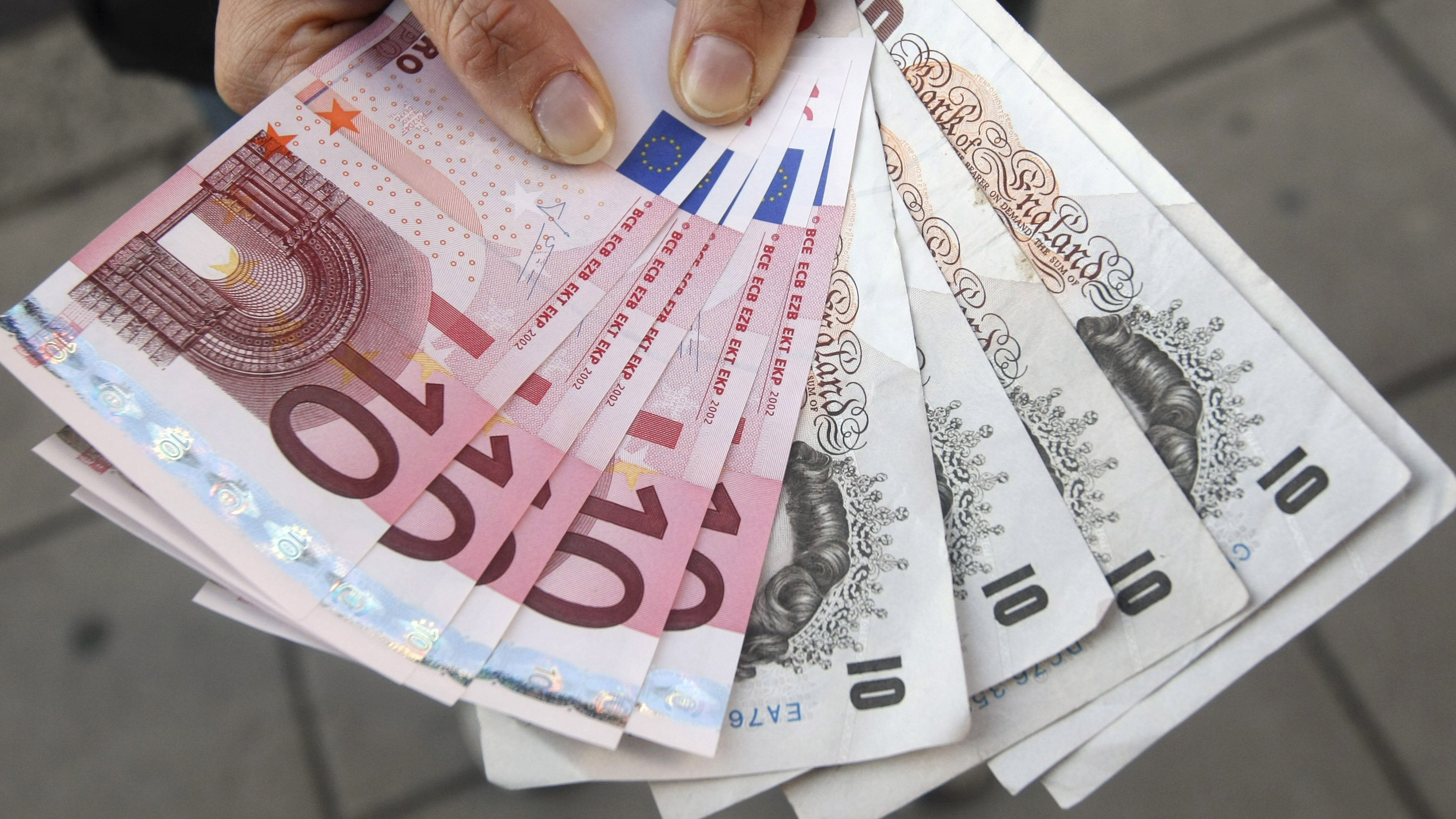
When compared with other major EU economies, the UK's debt levels would put it somewhat in the middle order. (Credit: AP)
When compared with other major EU economies, the UK's debt levels would put it somewhat in the middle order. (Credit: AP)
Since the global financial crisis of 2008, national debt has been the focus of many debates involving the UK economy.
A festering Brexit crisis has introduced further uncertainty into the conversation, with economists attempting to gauge the likely fallout of the UK leaving the European Union.
As the country prepares for a general election on 12 December, government spending is back in the spotlight as political parties set out their fiscal road maps.
For the financial year ending March 2019, the UK government's gross debt was £1,821.9 billion ($2,347.7 billion), 84.2 percent of gross domestic product (GDP) and 24.2 percentage points above the Maastricht reference value – an EU budgetary discipline protocol that seeks to maintain the debt-to-GDP ratio below 60 percent.
Britain first exceeded that figure in March 2010, when debt was 69.1 percent of GDP.
The general government deficit, or net borrowing, however, was £41.5 billion in the year to March 2019, or 1.9 percent of GDP and 1.1 percentage points below the Maastricht reference value of three percent.
Despite posting an increase of £57.4 billion since March 2018, the UK's public sector debt decreased from 84.6 to 84.2 percent, implying that GDP is currently growing at a greater rate than government debt.
When compared with other major EU economies, the UK's debt levels put it somewhat in the middle order. For instance, Greece's debt-to-GDP ratio in March 2019 stood at an eye-watering 182.1 percent, Italy 136.6, France 99.7 and Spain 98.9. Germany, Europe's largest economy had a ratio of 61.7 percent.
Nordic countries such as Sweden and Norway are on a stronger footing, with 36.4 and 36.1 percent debt-to-GDP ratios respectively.
Zsolt Darvas, senior fellow at Brussels-based think tank Bruegel, said: "The current level of UK gross public debt is in the lower range of debts of advanced countries.
"The low global interest rate environment also resulted in low UK interest rates and academic research suggests that government bond interest rates will remain low for many years to come."
With the incumbent Conservative Party and the opposition Labour Party unveiling their election manifestos, an infrastructure spending boom appears to be on the horizon that would boost investment in rail, roads and buildings, but consequently increase national debt.
The climate crisis also found special mention as Prime Minister Boris Johnson and Labour leader Jeremy Corbyn vowed to spend more on clean energy and reduce carbon emissions.
Paul Johnson, director at the Institute for Fiscal Studies (IFS) said the Labour manifesto offered a significant increase in the role of the state.
"They estimate that their measures would push up day-to-day spending by £80 billion in 2023–24, which would be an almost 10 percent increase on what is currently planned. They estimate that their tax-raising measures would bring in a similar sum, which if delivered would push the tax burden well above levels sustained in the UK since the Second World War.
"They also plan to increase investment spending by £55 billion a year, a doubling on current levels and even more than the substantial increases proposed by the Liberal Democrats and the Conservatives."
The Conservatives appeared much more restrained in their spending commitments, the party plans to spend around £2.9 billion more annually.
While launching the manifesto in Telford in the West Midlands, Johnson vowed to improve schools, hospitals and policing.
Carl Emmerson, deputy director at the IFS, said: "The increases in day-to-day spending proposed in the Conservative Party manifesto are very modest, adding less than £3 billion a year, or less than one-third of one percent, to spending by 2023–24."
Having promised a slew of reforms, both the parties have signaled a significant spike in public borrowing. But, given the fact that the UK's debt payment burden is not exactly huge at the moment, and with the government paying record low interest rates, as a proportion of GDP, there is some room for increased public spending, provided due fiscal diligence is observed.
According to Bruegel's Darvas, public debt as a share of GDP will continue to fall in the UK in the years to come, which, again, is helped by very low interest rates.
"A gigantic budget deficit or an economic contraction would be needed for a rise in the public debt-to-GDP ratio," he added.